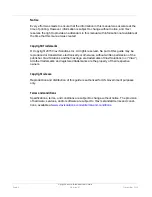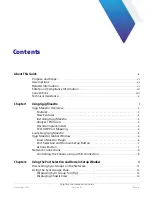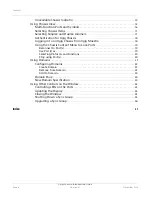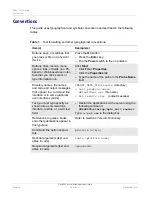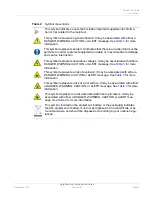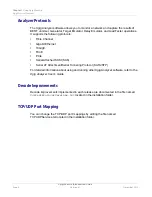
Chapter 1
Using Xgig Maestro
Xgig Maestro Overview
Xgig Maestro Introduction Guide
Page 2
Version 8.1
November 2015
Xgig Maestro Overview
Xgig Maestro application is the framework of an Xgig generation system. This framework
houses the software for the Xgig BERT, Xgig Jammer, Xgig Generator, Xgig Target
Emulator, Xgig Delay Emulator, and Xgig Load Tester (each licensed separately).
Combined with an Xgig multi-function blade, this framework lets you test Fibre Channel,
Gigabit Ethernet, or Serial Attached SCSI (SAS) / Serial ATA (SATA) networks. You access
Xgig BERTs, Xgig Jammers, Xgig Generators, Xgig Target Emulators, Xgig Delay
Emulator, and Load Tester from the Maestro General window. Once a Maestro plugin is
loaded, it’s tab appears across the top of the Maestro window. Use these tabs to manage
each program. This chapter describes the Xgig Maestro graphical user interface (GUI)
basics.
Features
Xgig Maestro has the following features:
•
Configuration manager
You can view and access Xgig BERT, Xgig Jammer, Xgig Generator, Xgig Target
Emulator, Xgig Delay Emulator, and Xgig Load Tester test configurations/files from
each function tab.
•
Port discovery, port configuration, and trigger domain set up
•
Drag-and-drop capabilities
You can drag a configuration file to the Parameters Status table to load it.
•
Xgig Maestro operates using 32-bit and 64-bit versions of:
–
Microsoft Windows 7 (Professional and Enterprise)
–
Microsoft Windows 8.1 (Professional and Enterprise)
–
Microsoft Windows Server 2008 (Standard and Enterprise)
–
Windows Server 2008 R2 Standard or Enterprise with Service Pack 1 (64-bit
only)
–
Windows Server 2012 R2 Update Standard or Essentials (64-bit only)
•
Protocols available in Xgig Maestro are:
–
Fibre Channel
–
Gigabit Ethernet
–
10GigE
–
FCoE
–
PCIe
–
Serial attached SCSI (SAS)
–
Serial AT Attachment/Serial Tunneling Protocol (SATA/STP)




